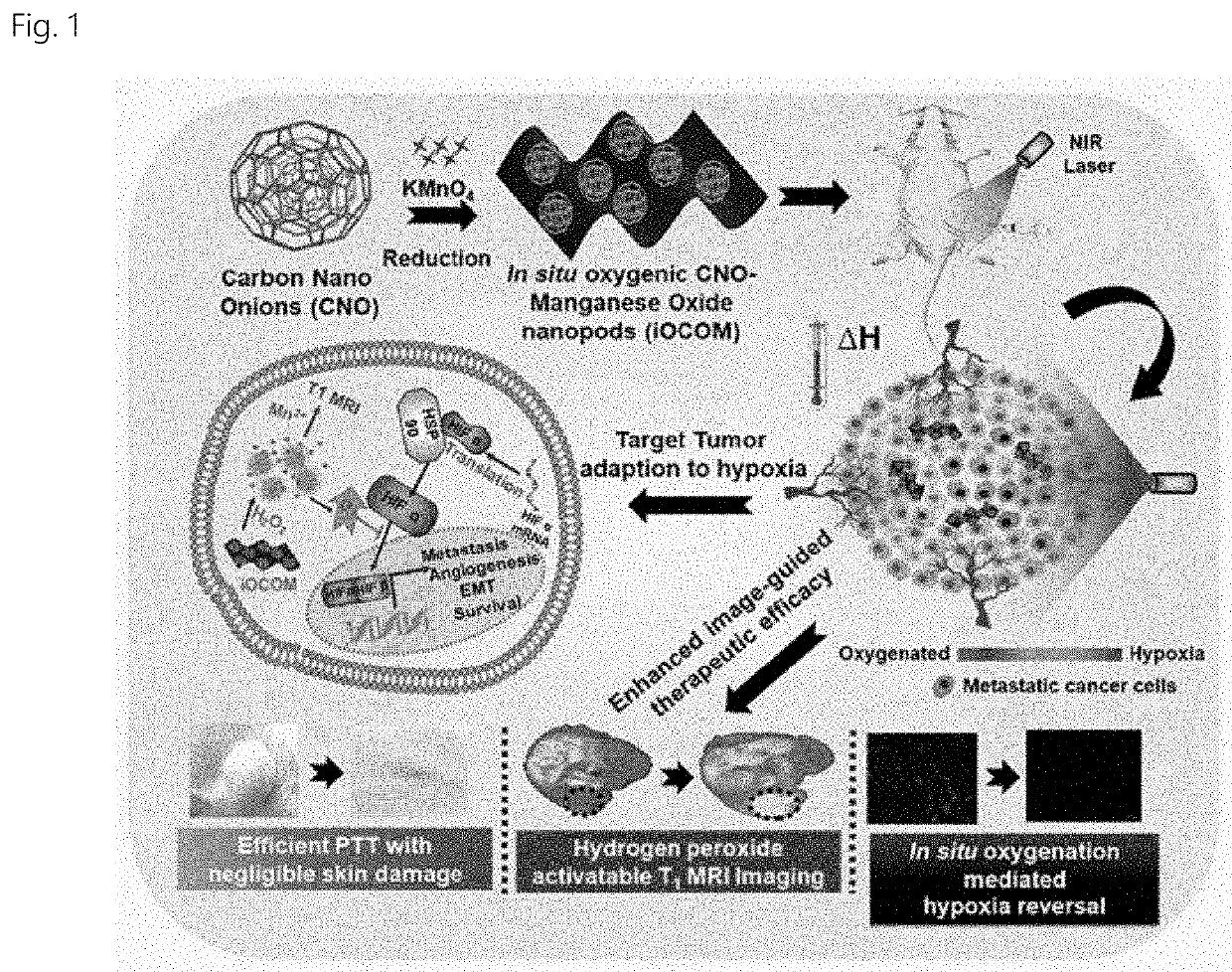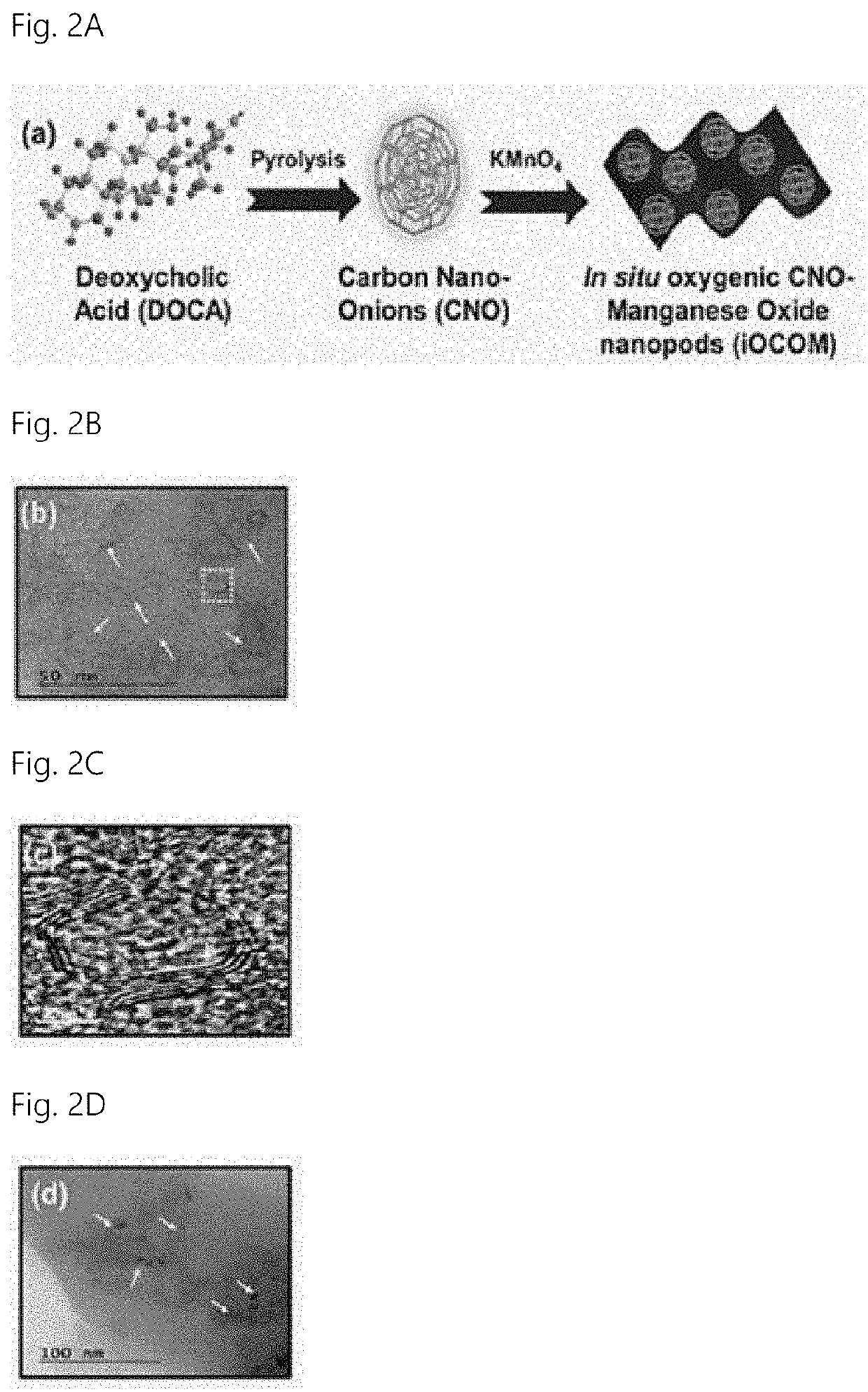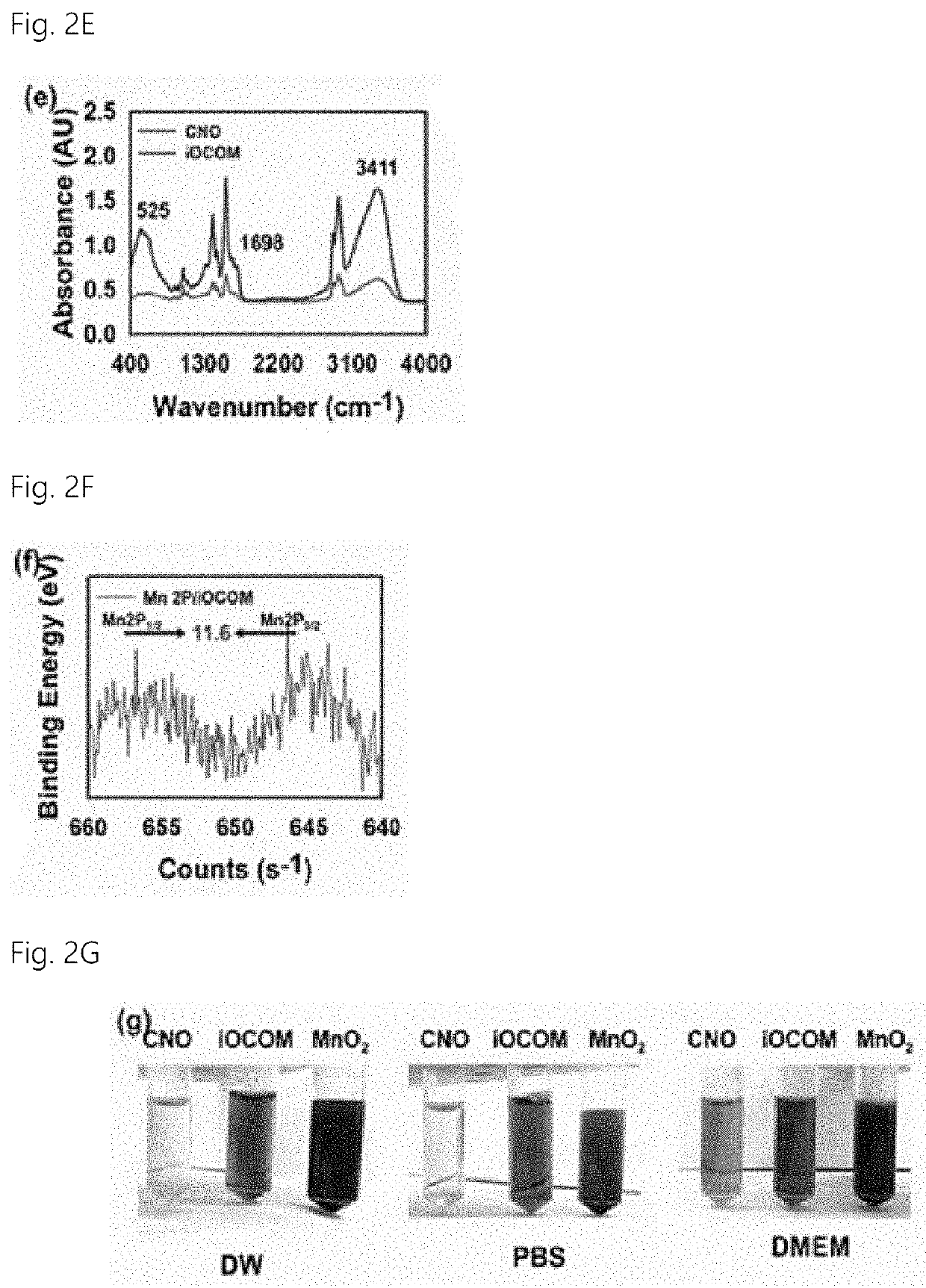Tumor microenvironment-responsive nanacomplex and anticancer composition comprising same
a nanocomplex and tumor microenvironment technology, applied in the direction of nanocapsules, drug compositions, capsule delivery, etc., can solve the problems of poor penetration of chemotherapeutic drugs in avascular hypoxia, and achieve the effects of suppressing cancer cell proliferation, maximizing image-guided photothermal therapeutic efficacy, and stable structur
- Summary
- Abstract
- Description
- Claims
- Application Information
AI Technical Summary
Benefits of technology
Problems solved by technology
Method used
Image
Examples
example —
Example—Synthesis of iOCOMs
[0027]CNOs were synthesized using sodium deoxycholate (DOCA) as a precursor by a pyrolysis method. Briefly, 500 mg of DOCA was added to a 50-mL beaker, placed in a heating mantle, and then heated at 400° C. for 90 min. As the temperature increased, the color of DOCA changed from white to dark brown, indicating the synthesis of CNOs. Later, 40 mL of double-distilled water (ddH2O) was added to the above sample, followed by sonication at room temperature for 30 min. The obtained dark brown solution was dialyzed using a dialysis membrane (molecular weight cutoff, MWCO, 1 kD) for 2 days by replacing dialysis media (ddH2O) every 6 h. The dialyzed samples were freeze-dried.
[0028]The synthesis of iOCOMs was carried out by adding 100 μL of KMnO4 (2 mg / mL) to 2 mL of CNOs (2.5 mg / mL) to reduce KMnO4 to MnO2. The samples were incubated for 10 min.
[0029]As described in the above example, CNOs can be synthesized using natural bile acid, deoxycholic acid (DOCA) followin...
PUM
| Property | Measurement | Unit |
|---|---|---|
| temperature | aaaaa | aaaaa |
| interplanar d lattice spacing | aaaaa | aaaaa |
| NIR wavelength | aaaaa | aaaaa |
Abstract
Description
Claims
Application Information
 Login to View More
Login to View More - R&D
- Intellectual Property
- Life Sciences
- Materials
- Tech Scout
- Unparalleled Data Quality
- Higher Quality Content
- 60% Fewer Hallucinations
Browse by: Latest US Patents, China's latest patents, Technical Efficacy Thesaurus, Application Domain, Technology Topic, Popular Technical Reports.
© 2025 PatSnap. All rights reserved.Legal|Privacy policy|Modern Slavery Act Transparency Statement|Sitemap|About US| Contact US: help@patsnap.com



